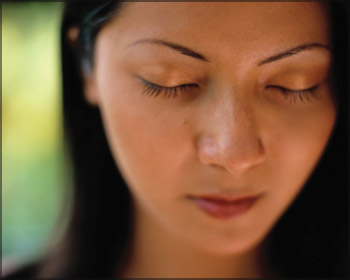Youth in Buddhism
Youth: foundations of human beings:
'Youth are foundations of human beings,' Buddha declared twenty five
hundred years ago. At present, we also say that youth are the pillars of
a nation and in a similar vein, Buddhist youth are the pillars of
Buddhism.
Nevertheless, the questions are hanging in the air in every society
whether we have done enough for the benefit of youth? How to develop
youth resources to be an efficient force of the society? And how to
solve the youth problem in every society?
 Unquestionably,
the answer to these questions is to build a good, righteous and strong
youth, the foundation of all human beings, for betterment of mankind and
society. That is to transform and change every youth to be a good,
intellectual, wise and righteous youth. This is where Buddhist teachings
come to life and help develop youth. Unquestionably,
the answer to these questions is to build a good, righteous and strong
youth, the foundation of all human beings, for betterment of mankind and
society. That is to transform and change every youth to be a good,
intellectual, wise and righteous youth. This is where Buddhist teachings
come to life and help develop youth.
In the course of this writing I wish to formulate a Theravada
Buddhist response to build and improve the youth, looking through a
magnifying glass of the Triple Gem, the main Buddhist pillars.
In Buddhist teachings, if we carefully examine the discourse of the
Buddha, we would see that Buddha was keenly aware of the problems that
we confront in the social dimensions of human life, and this he had
designed his teachings to address these problems just as much as to show
the way to a final liberation.
Although these teachings remain in the background, hidden behind the
more numerous texts dealing with personal ethics, mental development,
and philosophical understanding, I feel they can be drawn upon for a
clear-cut practical guidelines for youth of today addressing the weighty
problems we face today.
The youth life of the Buddha can be an inspirational virtue for youth
of today. How Buddha spent his youth and what was His spirit at that
time are relevant issues for youth of today to think about and treat it
as a model.
Little detail is said in the Pali canon about the Buddha's childhood
and youth, but the text gives an impression that he lived a life of
luxury within the walls of the three palaces used for each of the three
seasons of Kapilavasthu in southern Nepal.
The young prince wore fine garments, was perfumed with fragrances and
surrounded by musicians and attendants who ministered to his every need.
Although these conditions might be calculated to produce the archetypal
'spoilt youth' the Buddha's character does not seem to have suffered
unduly, and he is depicted as a precocious but considerate youth with a
keen intelligence.
As a nature of youth he was not satisfied with what he had and what
he was given by his elders. Although palace life was comfortable it was
unfulfilling, and the young Buddha yearned for a deeper and more
spiritually satisfying way of life.
The legend represent this disaffection in a story in which the Buddha
made four visits outside the palace in a chariot where he happened to
encounter unpleasant sights of an old man, a sick man, a corpse and a
peaceful religious mendicant.
These four signs experiences impressed upon him above all the
transient nature of human existence and he realised that not even the
palace walls could keep suffering and death at bay and made up his mind
to leave the palace.
Taking a last look at his sleeping wife and child, he departed to
become a homeless mendicant while he was still too young to do so.
The simple, touching story is hard to believe in the literal sense.
It is hard to believe that the Buddha was as naive as the story portrays
him, or that his disenchantment with palace life was nearly as sudden.
If we read it as a parable in which palace life represents
complacency and self- delusion, and the vision of the four signs the
dawning of a realisation about the nature of human life.
If the Buddha was alive today he would see the four signs all around:
every elderly person, every hospital, and every funeral would bespeak
the brevity and fragility of life, while every temple and religious
minister would be testimony to the belief that a religious solution to
these problems can be found.
The parable seems to suggest that although the signs are all around,
most people-like the youth Buddha-construct mental barriers (the palace
walls) to keep unpleasant realities at bay.
Even then, there are times when the unwelcome facts of life thrust
themselves upon us in a manner it is impossible to ignore, such as in
sickness or bereavement, just as they did when the Buddha went forth in
his chariot. For youth of every period and country such mental barriers
blocks 'right path' and opens wrong path instead.
Shaken from its complacency the Buddha made the radical decision to
turn his back on family life and go in search of spiritual knowledge.
This decision was not unprecedented because it is a nature of youth to
take such radical decision. We are witnessing everyday around us that
the today's youth takes such radical decision too but sadly the wrong
decision mostly.
The examples of youth today taking such radical decision are to enter
cult, political arena, drug addiction, sexual crime and so on. Rightly,
modern psychologists regarded youth period as a turning point in life. |
